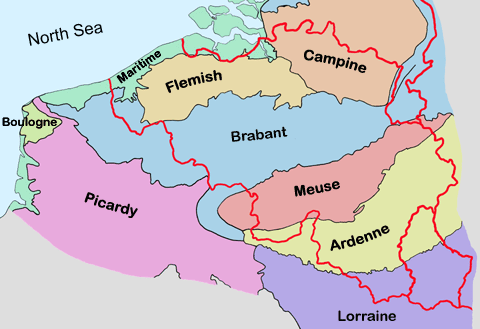
Study area - The Maritime district
The Maritime district (Mar.) is a coastal plain, in the northern part very strongly urbanized and industrialized. The relative mildness of the climate, occurrence of sea sprays and relatively strong winds are decisive factors for the lichen flora. A few sandy dunes still remain; when they are not trampled too much, depressions of more or less stabilized sand (the so-called 'pannes sèches') are colonized by carpets of mosses and lichens, dominated by calcicolous or siliceous species, depending on sand acidity. Bushes that eventually colonize these depressions provide a suitable habitat for several epiphytic species. Although often impoverished, the epiphytic flora is mostly present on isolated trees along canals and roads, as well as around farms. Indeed, air pollution is still strong and clearly affects the lichen flora. The northern part of the district has no natural rock, but buildings and especially sea walls provide a substrate for several saxicolous species. The sea cliffs of cap Blanc Nez (highest point at 132 m) and those south of Ault are made of chalk belonging to the upper Cretaceous period; they are constantly eroded and submitted to sea sprays and are more or less devoid of any lichen flora. The sea cliffs of cap Gris-Nez and others just south of it are not as high (summit at 50 m); they belong to the Jurassic period and are made of compact sand, marl, schistose glay and include impressive lenticular boulders of sandstone, several of which lying at the base of the cliffs (especially at the Cran aux Oeufs); bare surfaces of sandstone within this vegetation have a rich lichen flora made of saxicolous and terricolous species with a strongly nitrophilous facies, especially where sea birds (mainly Larus species) enjoy perching; these cliffs are the only locality in our study area where the so typical lichen zonation on rocky sea-shores is developed. Beaches covered by pebbles are a rich habitat for saxicolous and terricolous lichens.